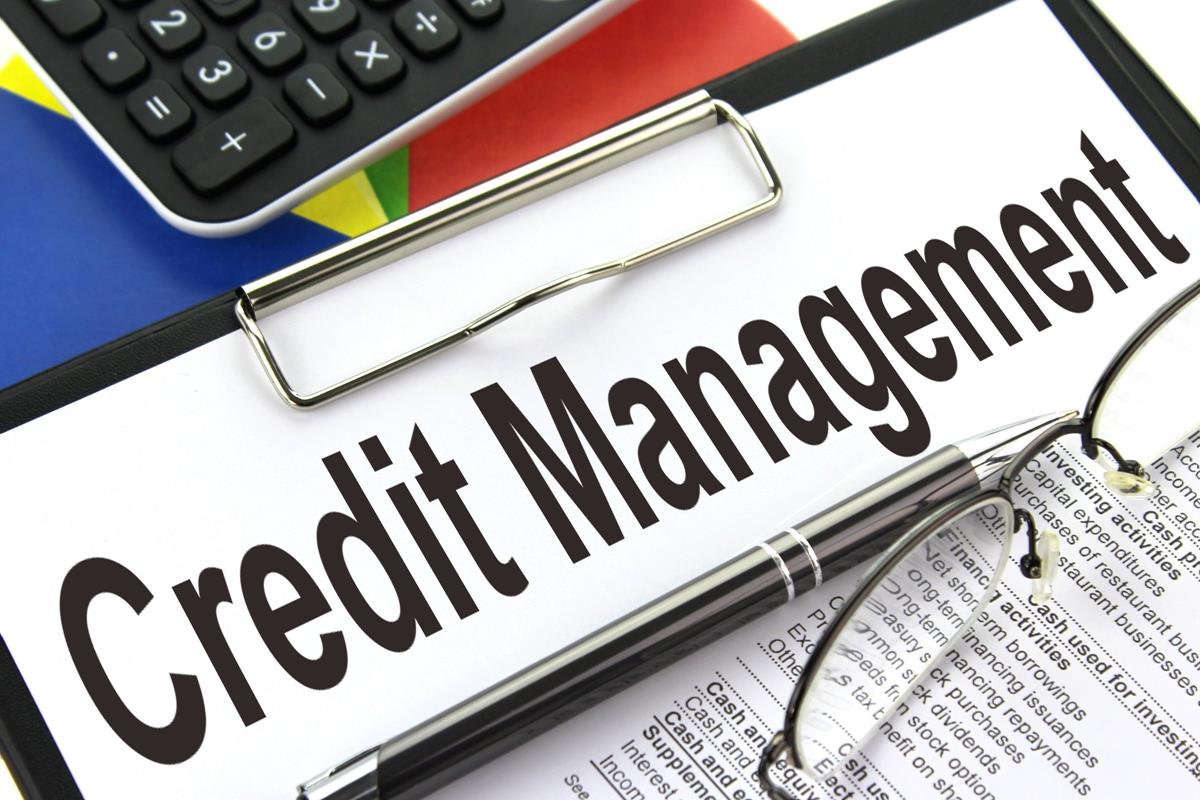
As purse strings continue to tighten in this tough economy, it is more important than ever for businesses to be paid for their services or goods on time.
For small businesses in particular, if a customer doesn’t pay on time, it can have catastrophic effects. Cash flow is king in any business of any size, and when one part of the puzzle isn’t fitting into place as it should – in this case – if a customer doesn’t pay on time or at all – then the missing piece can have an effect on everything else.
There can be many reasons why a customer doesn’t pay but the one that you and your business has control over, is your credit management processes and policies.
In this piece, we’re going to discuss credit management, including what it is, why it matters, what makes a good credit management strategy and what to do if you’re having trouble with your current credit management strategy.
What is credit management?
Credit management is effectively anything to do with the management of a company’s financial health. This might include processes in your business for agreeing to work with customers, payment terms, issuing credits and financing to clients, invoicing, and monitoring cash flow.
Many people mistakenly have the notion that credit management only refers to loaning money to people/businesses – literally giving them credit. However, as we touched on above and we will go into more detail later on – extending credit and credit management comes in lots of different forms.
Credit management is also often confused with collection processes in business, and while they are different things, they do have a direct impact on one another. Poor credit management processes can lead to needing debt collection. Credit management is also almost always handled internally in a business, whereas debt collection can be done internally, or it can be outsourced to a debt collection service.
While businesses of all sizes and in any industry can be negatively affected by a sloppy credit management process, businesses that supply goods or services before payment from their client especially need a highly refined credit management strategy. So, let’s talk about what the main component of credit management are.

What are the key components of credit management in a business?
A business with a stronghold on their credit management will have extensive experience and guidelines for each of the below processes:
Client Qualification
Before you open your doors (or your credit) to a client, you need to learn about them, see if they are a good fit and if they have any red flags.
The requirements of an ideal client will differ from business to business, and it’s based on understanding the risk level that your business is willing to take.
Your business needs to have a way to assess a new client before bringing them onboard.
The process should be quick and thorough, which isn’t necessarily simple, but one of the most effective first steps you can take is to run a credit check on every potential new client to get an idea of their financial history.
Payment terms
It’s a common practice for a business to provide a service or goods on the proviso that they will be paid after the supply or service, and by a certain time frame.
But it’s a balancing act with a very fine tightrope. The balance needs to be created between providing terms that are suitable and realistic to the industry the business is in and the realistic cash flow of the business.
In large corporations where goods are being supplied by many different businesses, it’s quite common for there to be a variety of payment terms, such as payment days being anywhere from 7 days after invoice to 90 days and discounts for early payments. This allows the corporation to prioritise invoices by the benefit of paying them sooner rather than later.
For smaller businesses though, it’s important to be realistic and not overcomplicate it. They need to be considered from the perspective of when business is slow rather than just when it is thriving.
Monitoring client credit
Your credit management strategy will only ever be as good as your ability to track your invoicing and your customer credit.
Keeping good records and robust accounts receivable processes are vital for this part, and it’s this area of credit management where the lines blur with debt collection.
Rather than the actual processes required to collect debts, such as phone calls, negotiation and customer contact, monitoring client credit is more so about keeping your records clean and understanding the position of the business and current credit levels. It’s the visibility rather than the process.

What does a good credit management strategy need?
A good credit management strategy incorporates the above components and breaks them down a little further, to the below key elements:
Understanding your risks
This element falls under the components of customer qualification and payment terms. It’s vital that you understand the risk your business can take when providing customers with credit in any form. How long can you wait for an invoice to be paid? What is the minimum cash flow your business needs to have to be able to run properly? How many new clients or orders do you need to manage cash flow?
These questions will help you work out how long your invoice payment period can be, as well as help to understand minimum order levels or the number of clients that your company needs. This can have flow on effects to help all areas of the business too.
Credit rating assessments
Falling under the client qualification, one of the best things you can do for your business is to run credit checks on any potential new client. This combined with understanding the risks your business is willing to take will make the process of vetting clients and general onboarding a lot more efficient.
Monitoring processes
While you may have run a credit check prior to onboarding a new client, it’s important to continue to monitor clients throughout your entire engagement with them. You need to monitor their payment habits, as well as whether they request extended payment terms or credit regularly and even run credit checks somewhat regularly.
Conditions can change economically for anyone, so you need to have processes in place to ensure a client still meets the requirements of working with your business.
Invoicing processes and timing
This area ties in with monitoring in that it is vital to have robust bookkeeping processes in place to ensure you can pick up on habits or patterns of your clients. This can allow you to find a red flag before it becomes a major issue.
It’s also important to have an efficient and prompt invoicing system. You need to invoice fast to get your payment sooner. It’s also important to be clear about how and when you will invoice your customers to set their expectations and provide consistency.
Customer Relations and management
The relationship you have with your clients can make a world of difference, especially when it comes to following the terms of doing business with you. Regularly keeping in touch with a customer also makes it easy to keep on top of payments or makes them more approachable if you do need to follow them up for any outstanding amounts.
The way you manage clients is also important, with good software making the process a lot easier for you and your team.
What if you’re struggling with your current strategy?
While you may have considered all of these key elements and components when creating your credit management strategy, you might still be having some issues. In some instances, you might need to overhaul your entire credit management procedure or you might only need to refresh how you do things in one area. Here are some of the areas where we see businesses fall down when it comes to their credit management:
Refreshing or tightening credit terms
While businesses are so often affected by all kinds of changes in the world – whether its to the economy or to a particular client of theirs – but often they are afraid to change their own processes.
Processes and policies in businesses should not be stagnant. Some can last for a very long time, but as technology changes and evolves, so too should the way you do things. And one of these things is your payment and credit terms.
What worked for your business 3 years ago or 10 years ago, may no longer be as relevant for you now. Don’t be afraid to reassess your current terms and conditions and payment terms.
You can also consider tailoring your terms around a particular client, whether it’s because they are struggling to adhere to their current agreement or because you’re looking to test the effect of the change.
Team training
Just like business processes need to evolve, so too does the team who works for your business.
Make sure the people you put in charge of your credit management processes have the skills that you need them to have to be able to confidently do their job.
Often taking time out for training can feel counterintuitive – as you’re losing time for them to work within the business, but the skills they may develop could have a long lasting impact on your business.
Seeking professional help
It’s important to know when to engage the services of someone who can help you. While many businesses like to keep processes and knowledge in house, there are lots of professional resources out there who can help you refine and hone the way your business does things.
For example, here at JMA, we offer credit consultancy services, where we can review your current processes and make recommendations of how to improve your current systems. Our main goal when it comes to our credit management consultancy service is to reduce the instances of bad debt and overdue accounts in your business. Which then reduces the time you need to spend on collections.
Businesses with strict and robust credit management practices and policies will benefit by experiencing less instances of bad debts, overdue accounts, and disputes.
Need help with creating a credit management strategy in your business?
If the credit management process in your business needs to be reviewed and potentially overhauled in your small to medium sized business in Australia, we’re here to help you.
As debt collectors and credit management specialists, our team is well versed in understanding how to create a solid credit management strategy and how to refine practices.
Work with our credit management team today so you can avoid working with our debt collection team tomorrow.
Call us on 1300 588 728.





















